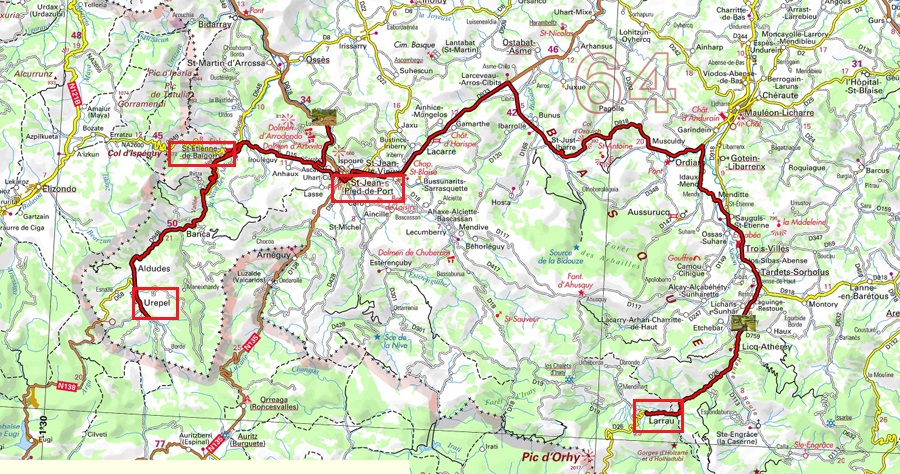
Monday, July 11, I left the rubble site after a peaceful night and a temperature that dropped to 18°C. I traveled the Aldudes valley from Saint-Étienne-de-Baïgorry to Urepel in the Quint country, the story of a border between France and Spain since 1237 with hazards, Spanish war, French Revolution etc., finally the 1856 Treaty of Bayonne settled the problem, but until when? The French State pays an annual fee for the grazing of the cattle of the French inhabitants in Spanish territory, a story of cornecul as Rabelais would say! The valley is sumptuous, narrow with at the bottom of the valley a tortuous torrent, the Aldudes. I visited three villages with Basque-style churches, galleries along the walls, each with its own appeal. As before, they were open to travellers, rare despite the summer period, but with a trying heat wave. The early hour discouraged campers. Going up the valley in the middle mountains I spotted a space to set up my bivouac, on the way back, at the edge of the torrent behind a clump of trees and brambles.
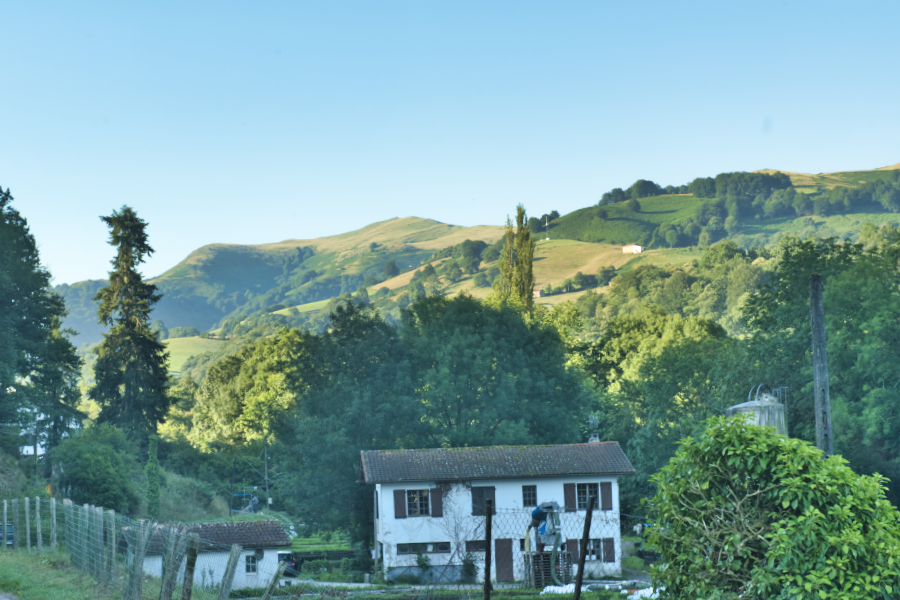
|

Lundi 11 juillet j’abandonnais le chantier de gravats après une nuit paisible et une température qui chuta à 18°C. Je parcourus la vallée des Aldudes de Saint-Étienne-de-Baïgorry à Urepel dans le pays Quint, histoire d’une frontière entre la France et l’Espagne depuis 1237 avec des aléas, guerre d’Espagne, Révolution française etc., finalement le traité de Bayonne de 1856 régla le problème, mais jusqu’à quand ? L’Etat français paye une redevance annuelle pour le pâturage du bétail des habitants français en territoire espagnol, une histoire de cornecul dirait Rabelais ! La vallée est somptueuse, étroite avec en fond de vallée un torrent tortueux, l’Aldudes. Je visitais trois villages avec des églises de style basque, galerie le long des murs, ayant chacune d’elle son attrait, dont celle de Larrau avec une Vierge à l’enfant en bois polychrome protégée par coffret en verre. Comme précédemment elles étaient ouvertes aux chalands, rares malgré la période estivale, mais avec une canicule éprouvante. L’heure matinale découragea les camping-caristes. En montant la vallée en moyenne montagne je repérai un espace pour établir mon bivouac, au retour, au bord du torrent derrière un bouquet d’arbres et de ronces.

|
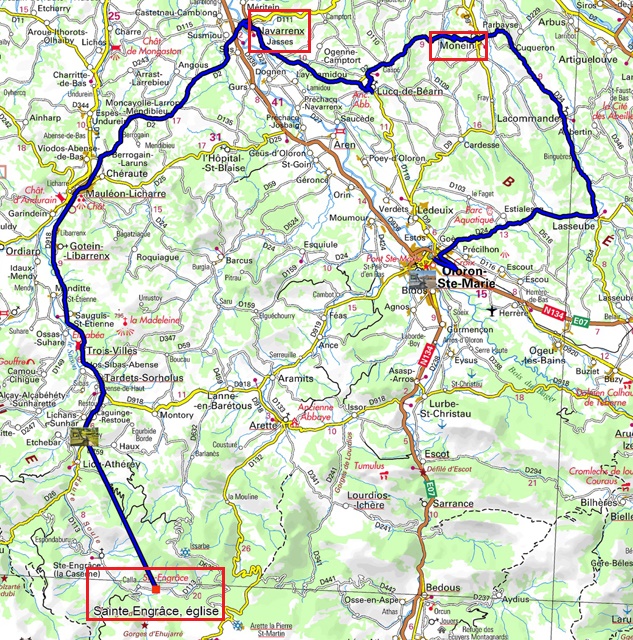
Tuesday, July 12 I took one of the paths of the Way of Compostela to reach the church of Sainte Engrâce whose external configuration is strange with a roof with a single slope from the square tower. The interior attracts attention with ornate capitals, some of which have retained some of the original paint. Alas the most beautiful are behind a gate inaccessible to tourists. The church of Navarrenx does not have the attraction of the previous or the next. Indeed in Monien the fortified church has a tower 40 meters high and inside a double hull covers the two naves. On the way to Oloron I passed vintage Bentleys driven by equally vintage British couples that I greeted thinking of the resignation of the "Clown". I understood their stop because a little further, one of these young ladies was on the side of the road with an "old gentleman" under her skirts, "No sex, w'are British, isn't he, Bojo". I continued on my way, looking in vain for a parking lot that I couldn't find and I ended up at the Intermarché d'Oloron-Ste-Marie.
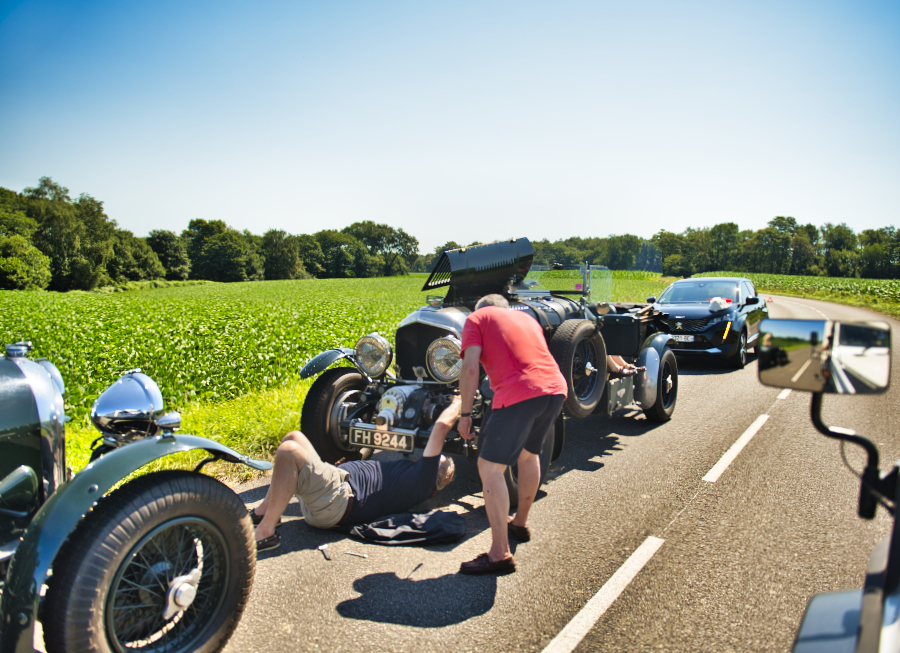
|
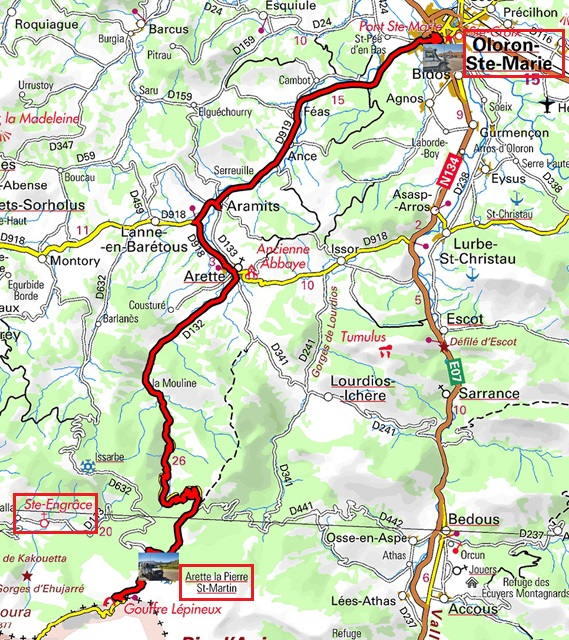
Wednesday, July 13 shortly before 8:00 a.m., opening time of Sainte-Marie Cathedral, I visited the exterior and more specifically the portal under the bell tower. The tympanum presents the descent from the cross of Jesus Christ and below Daniel in the lion's den, biblical narrative of the book of Daniel. Above two arches, the highest is dedicated to the sky the apocalypse, the one below is dedicated to the earth to the work of the peasants, which I detail. At the left apse the remains of hypocaust, Roman underfloor heating. The interior is sober with a few curiosities, the organ case as well as colored heads on the capital of a column. I left Oloron around 9:00 a.m. crossing the Barétous valley to the Pierre-St-Martin pass. I was going to the Spanish border where the Spanish border police watched the traffic without controlling. Many motorhomes were taped side to side at the pass. I turned back a few kilometers to take up residence for three nights in an almost deserted parking lot.
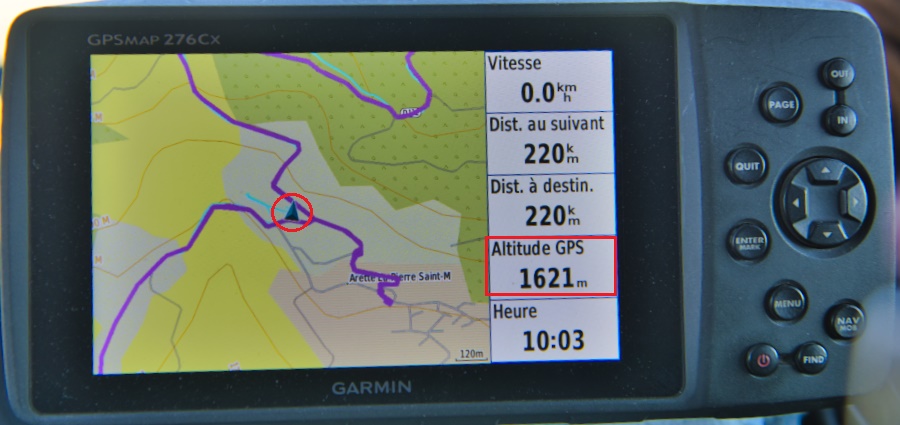
|
| Altitude of my bivouac! |
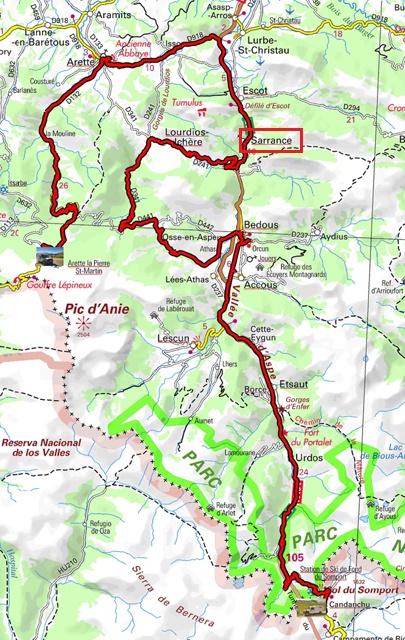
Saturday July 16 I took the direction of the Pass of Somport via the Aspe valley from Lurbe-Saint-Christau. The valley is narrow with mountain villages. The first stop was in Sarrance, 160 inhabitants, with very narrow streets, despite everything I arrived near the church to park. Next to it, a fountain and a washhouse remind us that it is located on a road to Compostela. Formerly a monastery of the Premontese order existed from the 14th century. The current church dates from the 17th century, it is dedicated to the Virgin Mary. The exterior is composed of a building preceded by a hexagonal tower, the whole bears the marks of the years. The interior is very dark, I groped around. However I took the photos at ISO 3200 with only the 24/70mm zoom. The picture of the Virgin in the niche above the altar is nondescript. The adjacent cloister is two storeys covered by slate roofs and dominated by the hexagonal bell tower with the mountain in the background. During my visit into the cloister I met a Premonstratensian brother dressed in white, we exchanged a few words on religion, his face radiated kindness and compassion for others. I was satisfied for the day. I continued the ascent of the valley stopping at Orcun to see the chapel, alas a poster informs the walker that the visit is by appointment, not mentioned by the Green guide. I reached the Spanish border without having found a parking lot that I advised at the ski resort of Candanchu 1558 meters above sea level in Spain. The peak of the heat wave being announced Monday, July 18, I decided to stay there until Tuesday morning, certainly the temperature climbs to 30°C at the zenith but drops in the night to 13°C, have good rest.
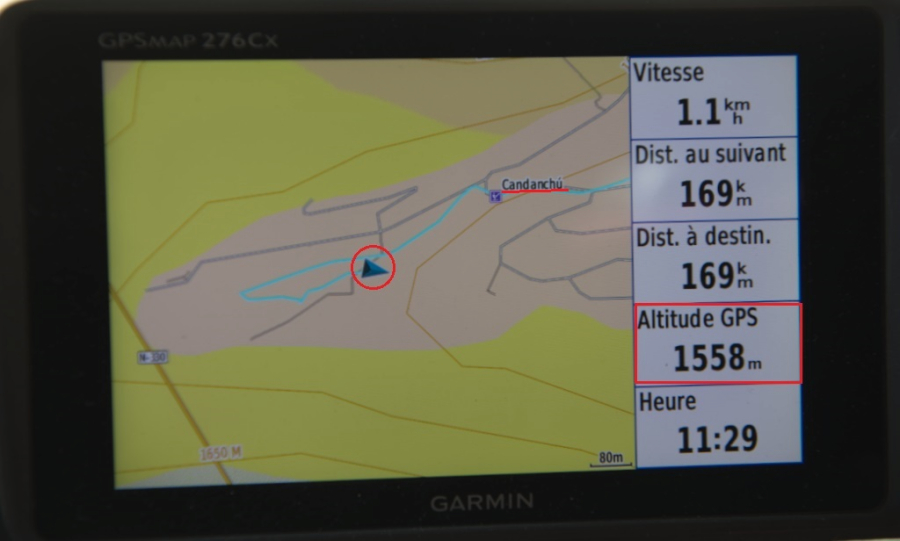
|
| Altitude of my bivouac ! |